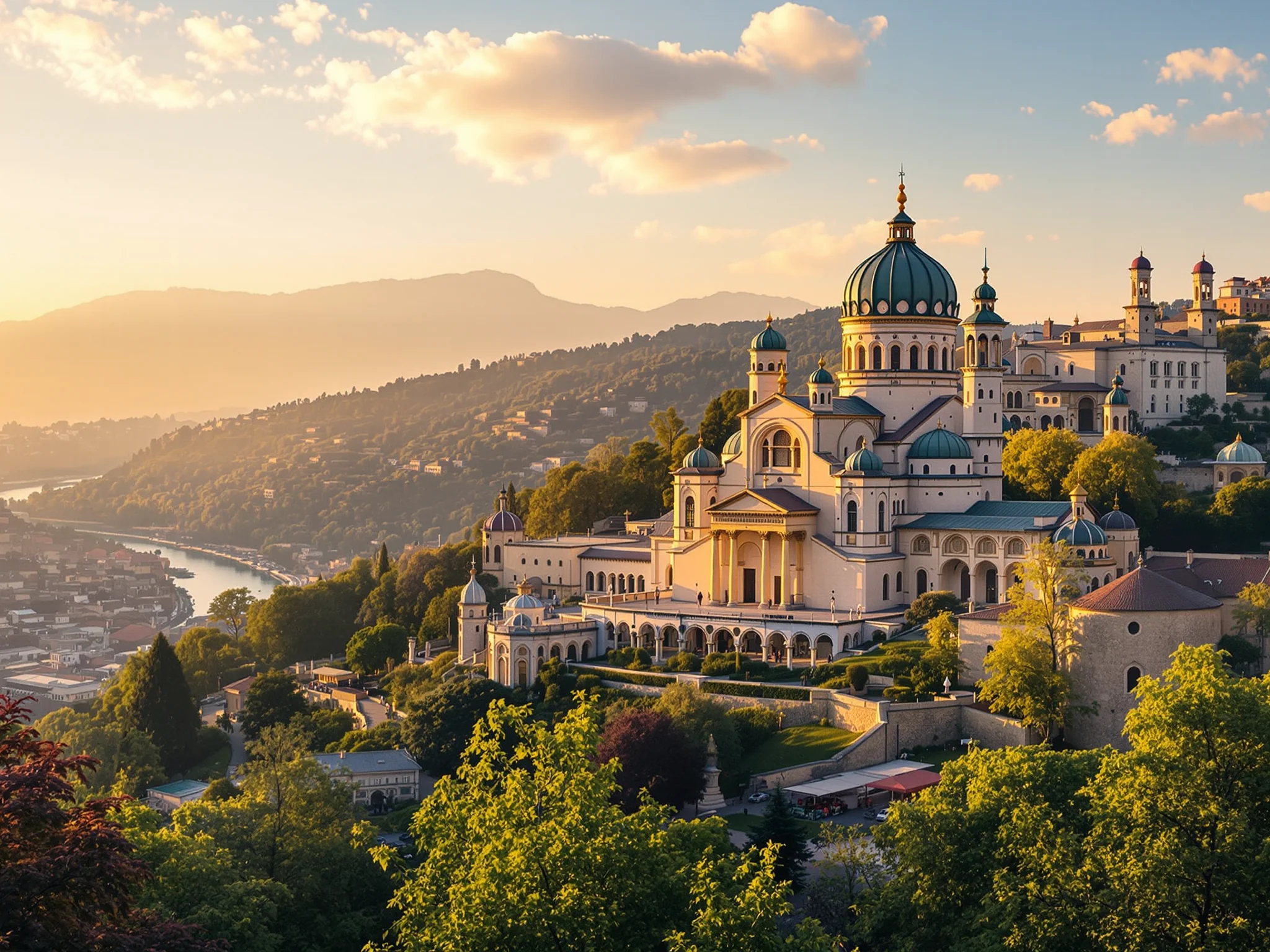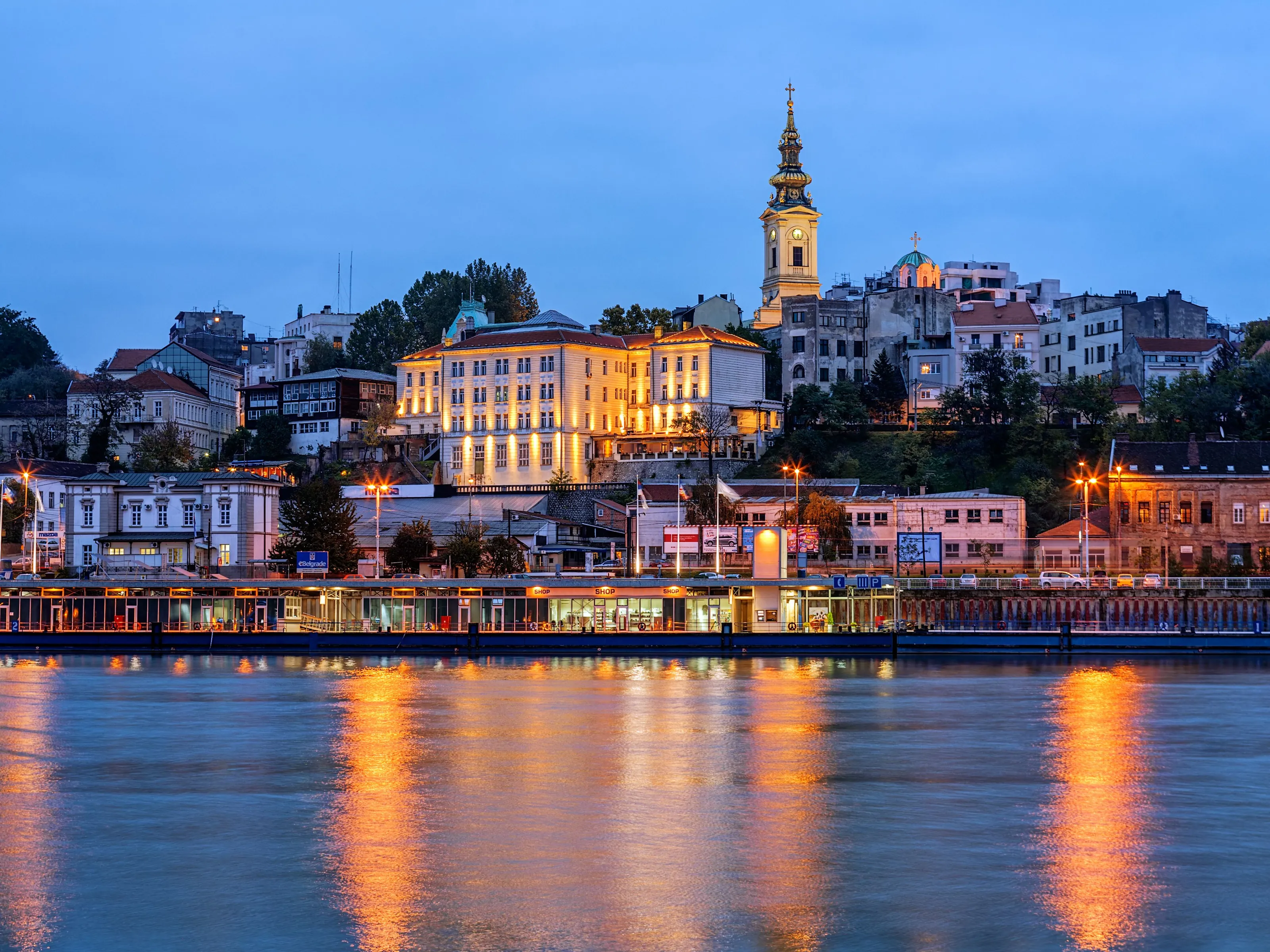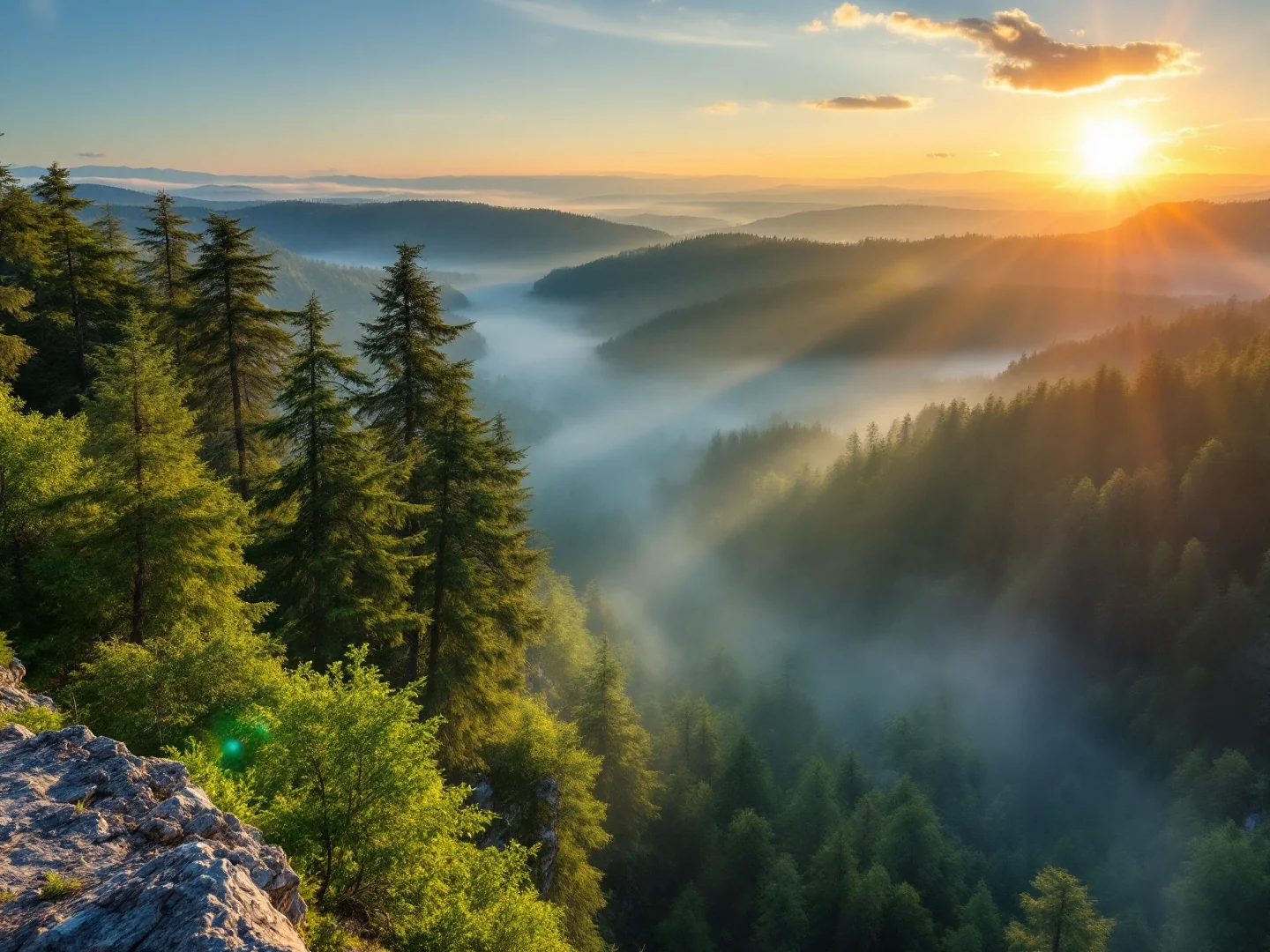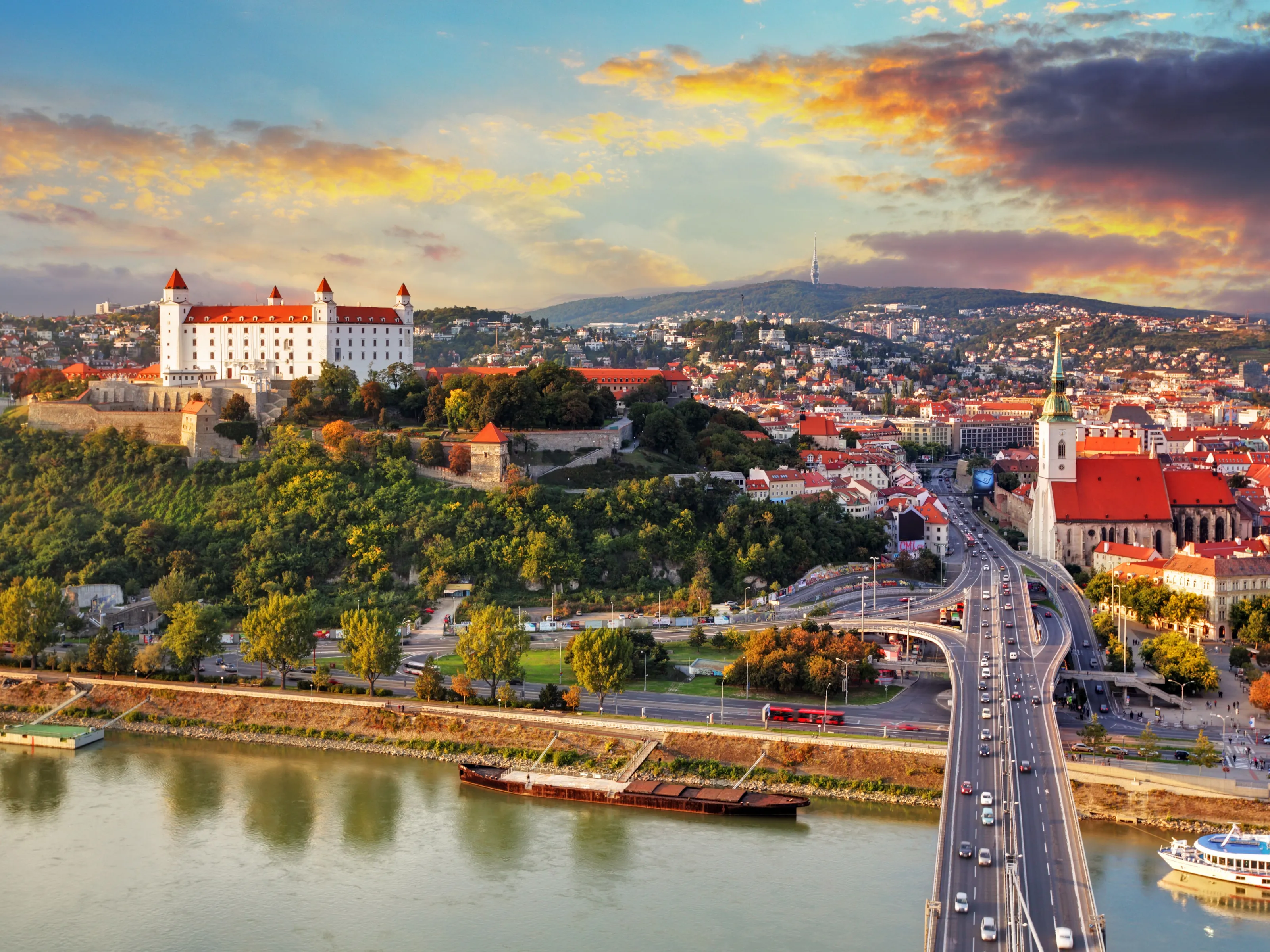Why Visit Sofia?
Sofia surprises as the Balkans' most underrated capital where golden-domed Alexander Nevsky Cathedral dominates skylines as one of the largest Orthodox cathedrals in the Balkans, Roman Serdica ruins lie beneath modern streets, and Vitosha Mountain's 2,290m peak towers over city offering year-round hiking and winter skiing within 30-minute reach. Bulgaria's capital (pop. 1.2 million) mixes 7,000 years of Thracian-Roman-Ottoman-Communist layers with emerging contemporary energy—yellow cobblestones (Communist legacy) line pedestrian Vitosha Boulevard, Soviet-era monuments stand beside Ottoman mosques, and Lavov Most hipster bridge hosts weekend markets.
Alexander Nevsky Cathedral (free, donations appreciated) overwhelms with 5,000 m² of gold-plated domes, Byzantine frescoes, and crypt icon collection (BGN 10/$5), while nearby St. Sofia Church (6th century, free) lends name to city. Boyana Church (around BGN 10/$5 UNESCO) preserves 13th-century frescoes rivaling Renaissance masters.
Yet Sofia reveals in contrasts—Roman Rotunda of St. George (4th century, free) survives amid government buildings, while Serdica Complex exposes 2,000-year-old streets where shoppers walk above excavated Roman thermae. Vitosha Mountain access: take bus 66 or taxi to Aleko hut (~1,800m); from there, hiking trails lead to Cherni Vrah peak (2,290m, 2-3 hours round-trip).
Winter skiing December-March at local's budget ski area. The old Simeonovo gondola has been closed for long periods—always check current lift status before relying on it. Museums span National History Museum's Thracian gold treasures to Museum of Socialist Art's communist propaganda statues.
The food scene celebrates Bulgarian staples: banitsa cheese pastry (BGN 2/$1 breakfast), shopska salad, kavarma stew, and yogurt (Bulgaria claims invention). Rakiya flows freely, while craft beer scene grows in Oborishte neighborhood. Day trips reach Rila Monastery (120km, Bulgaria's most famous, UNESCO, BGN 12 bus), Seven Rila Lakes hiking (chairlift BGN 25/$14 operates mainly June-September, weather permitting), and Plovdiv (2hr).
Visit April-October for 15-28°C weather perfect for mountain hiking, though December-March enables city skiing at Vitosha. With dirt-cheap prices ($38–$70/day), English-speaking youth, Communist history visible everywhere, and mountain access within tram ride, Sofia delivers Balkan capital authenticity at Europe's cheapest prices—underrated gem mixing Orthodox grandeur with post-Communist transformation.
What to Do
Orthodox Grandeur
Alexander Nevsky Cathedral
One of the largest Orthodox cathedrals in the Balkans (free entry, donations appreciated, 7am-6pm) overwhelms with golden domes, Byzantine frescoes, and Italian marble. The crypt icon museum (BGN 10/$5 10am-5:30pm Tue-Sun) displays 300+ Orthodox icons dating 9th-19th centuries. Modest dress required—cover shoulders; headscarves available at entrance. Avoid Sunday morning services (8-11am) unless attending for worship—too crowded for sightseeing. Best photographed from nearby park.
St. Sofia Church & Roman Rotunda
The 6th-century church (free, irregular hours) lends its name to the city. Simple brick exterior contrasts with Alexander Nevsky's opulence. Nearby St. George Rotunda (4th century, free) is Sofia's oldest building—tiny red-brick cylinder with Roman-era frescoes. Located amid government buildings. Both quick visits (15-30 min each). Combine with walk to city center.
Communist Legacy & History
Roman Serdica Complex
Free ancient ruins (24/7 access) exposed beneath modern streets at Serdica metro station. Walk above glass-covered excavations showing 2,000-year-old Roman streets, amphitheater, and thermae. Metro connecting passages double as underground museum. Best introduction to Sofia's layered history. Allow 30 minutes. The Sofia Regional History Museum (BGN 6, 10am-6pm) above ground provides context.
Museum of Socialist Art
Communist-era sculptures and propaganda (BGN 6, 10am-5:30pm Tue-Sun, closed Mon) in park setting. Toppled Lenin, Stalin, and Dimitrov statues removed from public squares after 1989. The red star from Party House roof centerpiece. Indoor gallery shows propaganda posters and paintings. English audio guide available. 20-minute tram ride from center—allow 90 minutes total. Fascinating glimpse of Bulgaria's recent past.
Mountain Escapes
Vitosha Mountain Access & Hiking
Take bus 66 or a taxi up to Aleko hut (~1,800m) on Vitosha; from there, marked trails lead to Cherni Vrah peak (2,290m, 2-3 hours round-trip). Winter skiing December-March—local's budget ski area. The old Simeonovo gondola has been closed for long periods—always check current lift status before relying on it. Restaurant at Aleko serves traditional food. Clear days offer views to Rila Mountains. Bring layers—temperatures drop with elevation.
Boyana Church UNESCO Frescoes
Book timed entry (around BGN 10/$5 9:30am-5:30pm) to view 13th-century frescoes rivaling Renaissance art—88 scenes covering walls. Only 10 visitors per 15-minute slot (preserves frescoes). English-speaking guide included. Located in Boyana suburb (15 min from center by taxi BGN 15-20 or bus 64/107). Combine with Vitosha visit since both in same direction. Photography prohibited inside.
Seven Rila Lakes Day Trip
Popular summer excursion (June-September, 2-hour drive from Sofia) to glacial lakes at 2,100-2,500m. Chairlift (BGN 25/$14 return) from Panichishte reduces hiking—operates mainly June-September, weather permitting. Full-day organized tours (BGN 60-90/$32–$49) handle transport. Easier than conquering Vitosha peak but longer commitment. Pristine alpine scenery—Bulgaria's most Instagrammed nature spot. Bring hiking boots, water, sunscreen. Too cold other months.
Gallery
Travel Information
Getting There
- Airports: SOF
Best Time to Visit
May, June, September, October
Climate: Moderate
Weather by Month
| Month | High | Low | Rainy days | Condition |
|---|---|---|---|---|
| January | 6°C | -3°C | 5 | Good |
| February | 10°C | -1°C | 10 | Good |
| March | 12°C | 1°C | 13 | Wet |
| April | 16°C | 4°C | 9 | Good |
| May | 21°C | 10°C | 13 | Excellent (best) |
| June | 23°C | 13°C | 13 | Excellent (best) |
| July | 26°C | 16°C | 7 | Good |
| August | 27°C | 16°C | 11 | Good |
| September | 25°C | 13°C | 4 | Excellent (best) |
| October | 18°C | 8°C | 10 | Excellent (best) |
| November | 11°C | 2°C | 5 | Good |
| December | 8°C | 1°C | 10 | Good |
Weather data: Open-Meteo Archive (2020-2024) • Open-Meteo.com (CC BY 4.0) • Historical avg. 2020–2024
Budget
Excludes flights
Visa Requirements
Schengen Area
💡 🌍 Traveler Tip (November 2025): Best time to visit: May, June, September, October.
Practical Information
Getting There
Sofia Airport (SOF) is 10km east. Metro M1 to center costs BGN 1.60/$1 (20 min). Buses BGN 1.60. Taxis BGN 15-20/$9–$11 (use OK Supertrans or Uber). Buses connect regional cities—Plovdiv (2hr, BGN 20/$11), Belgrade (7hr), Istanbul (8hr). Train station serves Balkans but buses often better.
Getting Around
Sofia has good metro (3 lines, BGN 1.60/$1 single, BGN 4/$2 day ticket). Trams and buses cover city (same price). Most attractions within walking distance—center to Alexander Nevsky 15 min. Taxis cheap via Uber/Bolt (BGN 10-20/$5–$11 typical). Skip rental cars in city—parking difficult, yellow cobblestone pedestrian zones.
Money & Payments
Bulgarian Lev (BGN). Exchange $1 ≈ 1.96 BGN, $1 ≈ 1.80 BGN. Pegged to Euro. Cards accepted in hotels and restaurants. Cash needed for banitsa bakeries, markets, small shops. ATMs plentiful—avoid Euronet. Tipping: round up or 10%. Extremely affordable—budget goes far.
Language
Bulgarian is official (Cyrillic script). English spoken by younger people in tourist areas. Older generation may only speak Bulgarian. Signs often Cyrillic-only. Learning basic phrases helpful: Blagodaria (thanks), Molya (please). Learn Cyrillic alphabet basics or use translator. Metro stations Cyrillic.
Cultural Tips
Head nod: Bulgarians nod up-down for 'no,' side-to-side for 'yes' (opposite of most cultures)—very confusing! Alexander Nevsky: Orthodox cathedral, dress modestly, women cover heads, free entry. Cyrillic: all street signs, metro stations—learn alphabet basics. Roman ruins: Serdica excavations under metro station. Yellow cobblestones: Communist-era paving, pedestrian zones. Vitosha: city mountain, ski resort December-March, hiking summer, chairlift BGN 30. Banitsa: cheese pastry, breakfast staple, BGN 2 from bakeries. Shopska salad: Bulgarian pride, white cheese. Rakiya: fruit brandy, Bulgarians drink seriously. Communist history: Soviet monuments in parks, Socialist Art museum. Rila Monastery: day trip essential, UNESCO, frescoes, mountains. Sunday: shops closed, restaurants open. Markets: Women's Market (Zhenski Pazar) authentic. Mineral springs: free public drinking fountains. Metro: modern, efficient, Cyrillic signage. Cheap prices: enjoy Europe's most affordable capital. Remove shoes in Bulgarian homes.
Perfect 2-Day Sofia Itinerary
Day 1: City Center & Cathedral
Day 2: Vitosha & Boyana
Where to Stay in Sofia
Center/Serdica
Best for: Roman ruins, hotels, shopping, Alexander Nevsky, metro, central, touristy
Vitosha Boulevard
Best for: Pedestrian shopping, restaurants, cafés, yellow cobblestones, lively, modern
Oborishte
Best for: Hipster bars, craft beer, cafés, residential, nightlife, young vibe, trendy
Lozenets
Best for: Upscale residential, restaurants, parks, safer, quieter, embassy district
Frequently Asked Questions
Do I need a visa to visit Sofia?
What is the best time to visit Sofia?
How much does a trip to Sofia cost per day?
Is Sofia safe for tourists?
What are the must-see attractions in Sofia?
Popular Activities
Top-rated tours and experiences in Sofia
Ready to Visit Sofia?
Book your flights, accommodation, and activities






